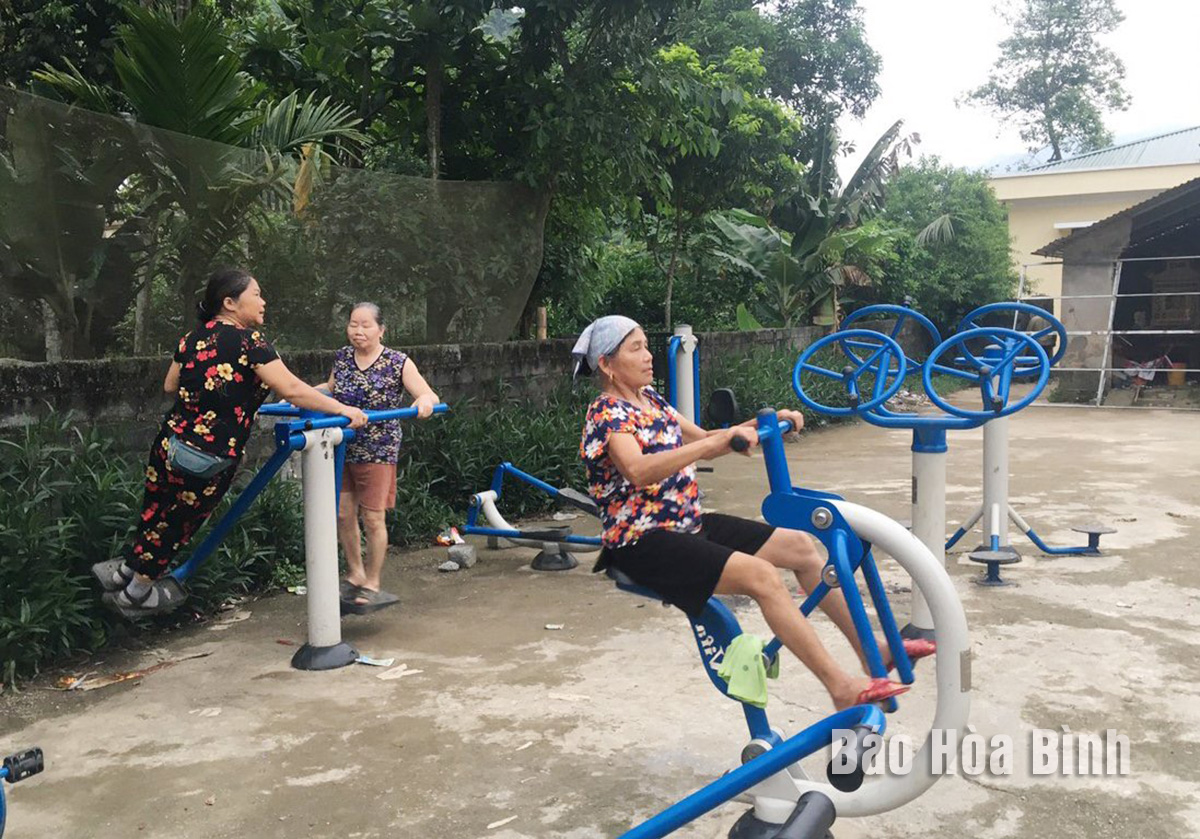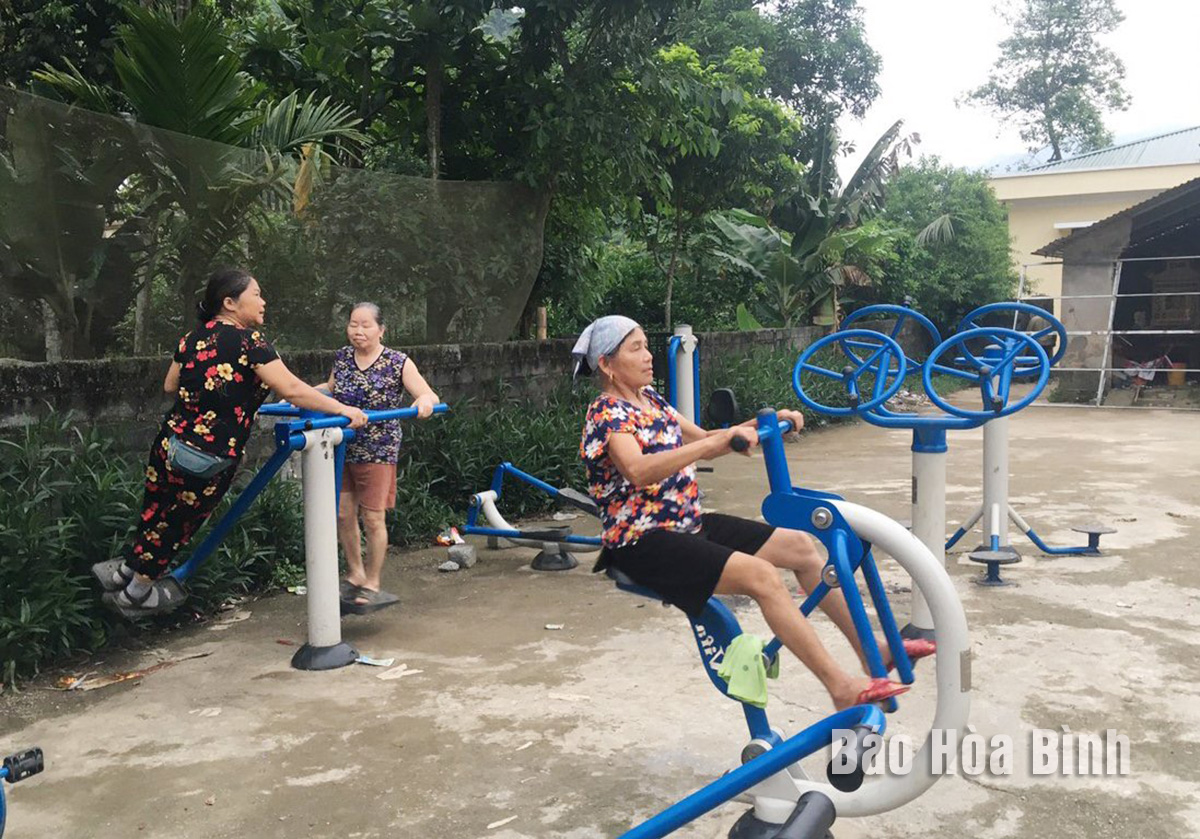
Cultural and sport activities are booming in Cao Sơn commune (Luong Son district), contributing to building a civilised cultural life, strengthening solidarity spirit, and successfully fulfilling local socio-economic development tasks.
Cao Sơn commune (Luong Son district) has installed fitness equipment systems, creating favourable conditions for local people to exercise and improve their health.
Every afternoon, the yard in front of Dam Da village cultural house is bustling with sports activities. Depending on preferences and age, people choose to practice the kind of sport that is suitable for their health such as volleyball and badminton.
Hoang Van Quy, a resident in Dam Da village, said that volleyball is the favourite sport of many villagers. Volleyball not only helps him improve his health but also provides an opportunity for him to meet and exchange with those who share the same passion, he continued.
In recent years, the cultural and sports movements in the commune have expanded in both quantity and quality. Among them, the "All people unite to build cultural life" movement is a typical example, which is associated with the "All people take exercise following the example of great Uncle Ho” movement.
All villages have their own art troupes which help preserve the cultural identity of the local Muong ethnic group. Folk dance clubs have also been established and operated regularly.
Regarding the sports movement, Cao Son commune is regarded as one of the outstanding areas in such sports as volleyball, archery and stick-pushing competitions. Teams of the commune have achieved high results in sports competitions at district-level.
Over 20% of the commune’s population regularly practise sports, with the most active ones being young people, women and the elderly. Volleyball and football clubs have been set up in all villages.
To promote the cultural and sports movements, local authority has directed agencies and mass organisations to maintain playgrounds which create a lively atmosphere and foster solidarity.
The commune organises cultural and sports activities as well exchange programmes on occasions such as national holidays. Investment is poured in upgrading cultural houses at villages to meet the criteria of new-style rural areas.
As a result, the cultural and spiritual life of local people has been improved. Last year, the per capita income in the commune reached 43 million VND (about 1,690 USD). Nearly 89% of households were recognised as cultural families and all villages met standards of cultural residential areas.
Bui Minh Chau, Vice Chairman of the People's Committee of Cao Sơn commune, said that in the coming time, local authorities will continue to direct agencies and organisations to encourage people’s active participation in cultural and sports activities. The commune will mobilise resources to build cultural infrastructure at the grassroots level as well as commend collectives and individuals with outstanding achievements in cultural and sports movements, thus contributing to the construction of new-style rural areas and civilised urban areas, he added.
The People’s Committee of Lac Son district held a ceremony on April 28 to receive the provincial relic certificate for the ancient rock carving site at Suoi Co stream, located in My Thanh commune.
A special music show titled "The country is in the fullness of joy” has been held at Hoa Binh Square in Hoa Binh city in celebration of the 50th anniversary of the liberation of the South and national reunification (April 30, 1975–2025).
The People's Committee of Lo Son commune, Tan Lac district, has organised the local annual traditional stream fishing festival on April 19 - 20.
As a land deeply intertwined with human history and Vietnam’s millennia-long journey of nation-building and defence, Hoa Binh is often revered for its epic tales and legends.
Residents of Hoa Binh boast a rich cultural identity, reflected in their unique language, traditional attire, customs, and folk melodies – described as "sweet as honey, clear as a mountain stream.”
Lac Son district’s Vu ban town held the 2025 Truong Kha temple festival on April 12–13 (the 15th–16th days of the third lunar month). Since its revival in 2019, the festival has been organised every three years, preserving valuable intangible heritage while meeting the community’s cultural and spiritual needs.



